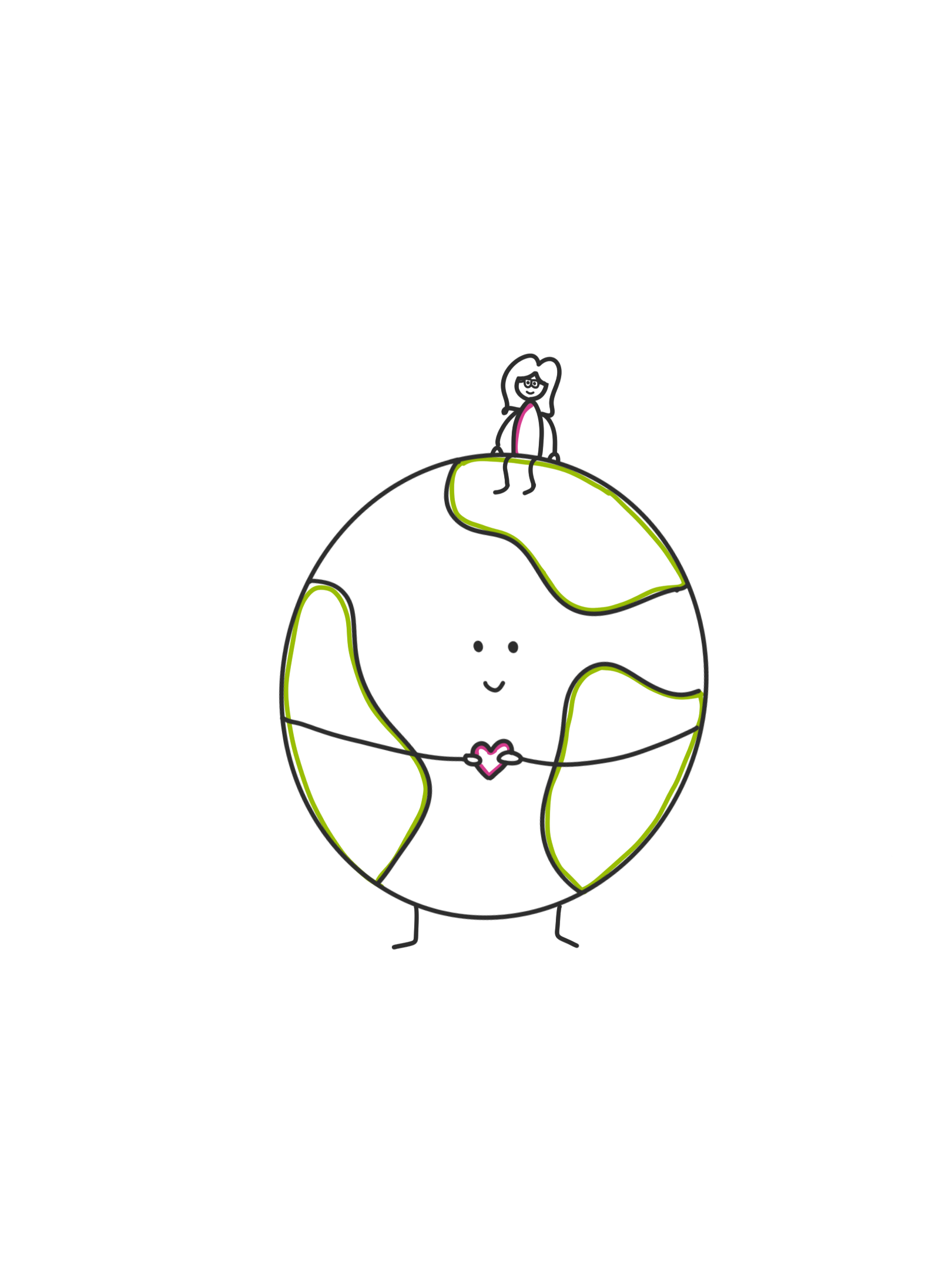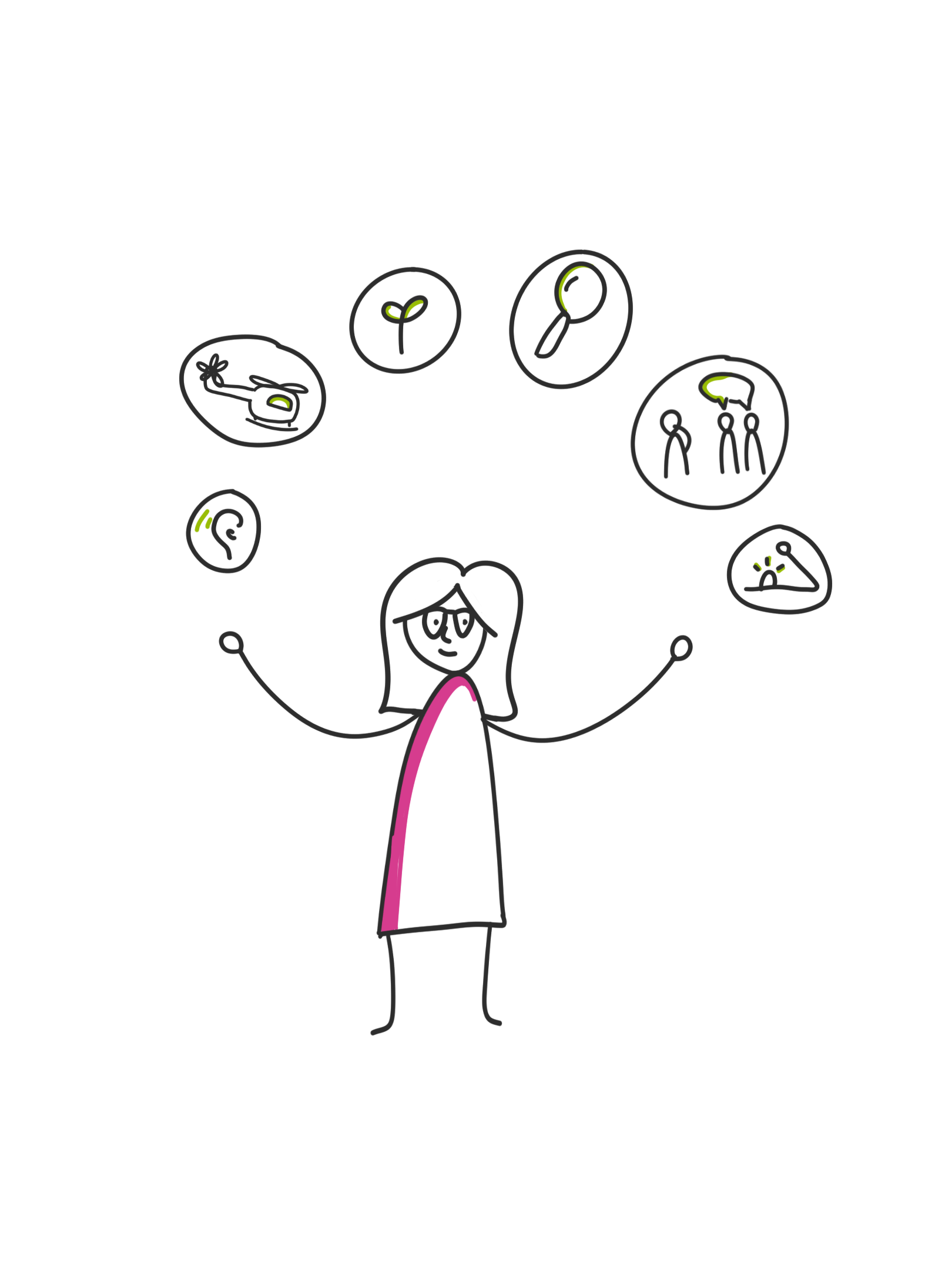Professional Identity and Vision

Vision
The world is heading to a climate humanity has never experienced (Mommers, 2019; Godin & Porro, 2022). The level of change in the climate is in our hands (KNMI, 2023). Climate mitigation focuses on reducing our impact to ensure a less damaging effect on the climate. Transitioning towards a new lifestyle is necessary to maintain a comfortable life and protect the earth. Designers can support the climate transition by bridging scientific climate research with societal needs. Therefore, designers should play a crucial role in the transformation economy facilitating the lifestyle transition. We can converge significant problems into accessible bits.
Designers should contribute to making the world better through design, as sustainability is not a challenge for one designer. The United Nations created 17 Sustainable Development Goals (SDGs) to make the world a sustainable planet, showing that designers could contribute to many challenges (United Nations, 2020b). Within these 17 SDGs, I want to contribute as a designer to goal No. 13: Climate action. This goal feels most urgent to me and relates to my skillset. I specifically want to focus on one target:
– Target three of SDG No. 13 focuses on improving awareness and education about climate change to cause impact reduction and early warnings (United Nations, 2020a).
Designers are adaptable and can quickly become experts in understanding problems and creating opportunities to solve them. To address pressing challenges, they should use their skills, such as stakeholder engagement, problem definition, and opportunity identification. In the context of climate change, designers can drive radical innovation across industries and support incremental changes in everyday lifestyles, thereby promoting a more climate-friendly society.
Even though climate change demands an urgent change in our society, a positive mindset can often be more effective in driving societal change than fear. Therefore, my designs aim to communicate positivity to inspire and motivate people to change. We may not be able to predict the future, but we can shape it (Godin & Porro, 2022). Designers should guide people toward a future-proof lifestyle, i.e., focus on behaviour change. There is no one-size-fits-all approach to sustainability; people must learn how to transition their lifestyles. By enhancing the positive aspects of this transition and making societal challenges more relatable, we can help people adapt to future circumstances and mitigate potential issues. Together, we must transform our lifestyles to reduce our impact.
Professional Identity
For years, I have made step-by-step changes to my lifestyle to reduce my impact on the climate. I have learned new skills, such as sewing my clothes and reducing waste, but improving myself is a continuous process. Throughout the years, people have often said, ‘I could never do what you are doing’. But also, ‘Because of you, I have reduced my meat consumption’. Both motivated me to put my skills into designing for sustainable lifestyle change. By changing my lifestyle, I will continue to learn and implement this by designing tools to support others in this transition.
I often find myself in conversations, listening to people’s challenges, discovering their motivations and trying to help them. One of my strengths is being a great listener and having open conversations without judgment. My analytical mindset allows me to easily map different needs and view projects from a helicopter view. This strength will enable me to dive deeper into people’s motives, which can support my decisions in the design process.
At the start of my projects, I conduct extensive research to ensure I am well-informed on the topic, which allows me to have an overview of the challenge. Once I have established sufficient background knowledge, I continue ideating concepts for the challenge. Researching before ideation ensures my project stays realistic, which I value in my designs.
My design processes are shaped to match the project goal. Even though I already understand many design methods, such as scenario thinking, prototyping, and user studies, I constantly explore and learn about new design methods. My goal is not to excel in a few methods but to have an extensive understanding of several methods, enabling me to decide which method fits the project goal the best. Matching the best method to the project goal will help my projects reach their full potential and support my vision of contributing to a sustainable planet.
To flourish as a designer, I need people in my environment who can challenge my design decisions and spark my thoughts with exciting perspectives. I work very structured
and communicative. Therefore, I often take on the role of facilitator in projects. In discussions, I am a listener who analyses perspectives and formulates conclusions to keep moving forward. In my future career, I work in an open-minded environment surrounded by creative and sustainability-oriented people. To continuously develop myself, I focus on expanding my knowledge by researching, engaging with users to add more perspectives to my work, and learning new methods. As a designer, you often work with too little information, which made me comfortable asking for help during the process. Lastly, I will continue reflecting on my progress to ensure I develop myself in line with my vision.

References
Godin, S., & Porro, M. (2022). De klimaatalmanak. Haystack.
KNMI. (2023). KNMI’23 Klimaatscenario’s voor Nederland. In Koninklijk Nederlands Meteorologisch Instituut. Koninklijk Nederlands Meteorologisch Instituut. https://cdn.knmi.nl/system/data_center_publications/files/000/071/901/original/KNMI23_klimaatscenarios_gebruikersrapport_23-03.pdf
Mommers, J. (2019). Hoe gaan we dit uitleggen (3rd ed.). de Correspondent.
United Nations. (2020a, August 11). Climate Change. United Nations Sustainable Development. Retrieved June 23, 2022, from https://www.un.org/sustainabledevelopment/climate-change/
United Nations. (2020b, September 19). Take Action for the Sustainable Development Goals. United Nations Sustainable Development. Retrieved June 23, 2022, from https://www.un.org/sustainabledevelopment/sustainable-development-goals/